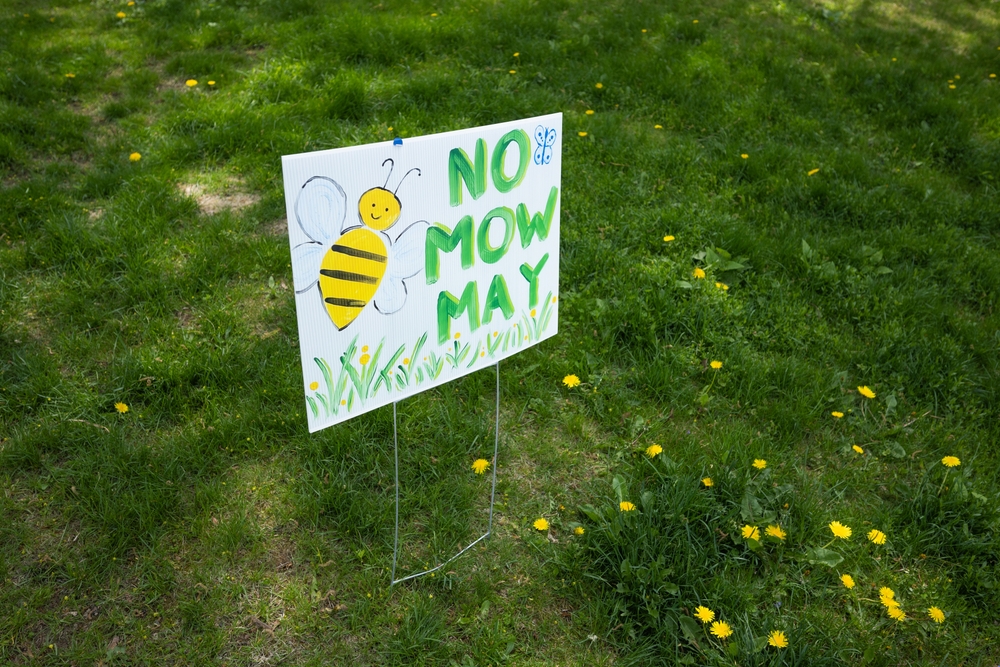Blaine Greteman | August 2009 issue

Two Neanderthals walk into a bar, order drinks, sit down and listen to the chattering, laughing crowd. Suddenly, one turns to the other and whispers, “Try to stay cool, but this sounds like one of those Homo sapiens joints.”
How would a Neanderthal know he was in a Homo sapiens joint? Laughter. In a Neanderthal bar, after all, one might have heard plenty of grunts and snorts, but presumably fewer giggles, since that staple of barroom banter—the laugh—hadn’t yet evolved in its current form. Today, we tend to focus on “he who laughs last.” But he who first burst forth with our characteristic “ha-ha-ha” took a major evolutionary leap toward humanity as we know it.
Laughter is ancient, predating the development of language. It’s ubiquitous; all mammals do it, in one form or another. Chimpanzees do it, panting with delight in response to tickling or pratfalls, as noted by none other than Charles Darwin. It’s also one of the first things babies learn. Now, though, scientists are asking two dead serious questions: Where does laughter come from? And why do we do it?
Recent studies suggest laughter evolved between 2 and 4 million years ago, after we learned to walk on two legs but before we could speak. For our hominid ancestors, laughter may have signaled safety and facilitated group interaction, making human society possible—just as it does today.
Dacher Keltner, a psychology professor at the University of California, Berkeley and author of Born to Be Good: The Science of a Meaningful Life, compares laughter to the evolution of tool making or opposable thumbs—the “signature of a great shift in our social organization.” No matter how much you tickle a lizard, notes Keltner, it won’t guffaw, chuckle or even purr. “One of the unique characteristics of mammals is that we play,” he says, “and as you get more complicated in the mammalian structure, you have a greater vocabulary of play, including laughter.”
Our closest mammalian ancestors, apes and chimpanzees, both laugh, though probably not at the same things we do. When apes play, they roughhouse, tickle and laugh, although few of us would mistake an ape’s cackle for the human equivalent.
“One of the biggest mistakes people still make is assuming that laughter is uniquely human; it’s not,” says Robert Provine, a neuroscientist at the University of Maryland in Baltimore who’s studying laughter to gain insight into the biology of social behavior. Apes and other mammals “vocalize as they inhale and exhale.” When Provine asked his students to identify recordings of chimp laughter in the classroom, for example, they mistook this “panting” laugh for dogs, breathless sex, even handsaws. Indeed, Provine maintains that almost all mammals laugh in this way—”If you tickle a rat, it laughs; we just can’t hear it.”
By contrast, “the human ‘ha-ha-ha’ chops up an exhalation the same way speech does,” Provine says. If you digitally remove the “ha” sound from a human laugh the way Provine has in a recording studio, you hear a long exhalation or sigh. This extended sigh may be our most primal existential defense mechanism, controlling our breathing in ways known to lower heart rate and blood pressure. Decoupling the laugh from respiration—so that we can giggle instead of pant—was a crucial evolutionary moment, Provine postulates, because it enabled the vocal control that allowed us to make all kinds of other “fancy sounds” needed for speech.
To reach that moment, though, Provine believes we needed to begin walking on two legs, taking pressure off the thorax, since four-legged mammals must synchronize their strides with their breath. The enhanced vocal control facilitated by this shift required “restructuring” our nervous system, adding cells to the area of the spinal cord that controls respiration and bulking up the part of the brain that coordinates these cells and facilitates speech and comprehension. Perhaps just a punch line and a chuckle separate us from our panting, tickling cousins.
A study recently published in the journal Current Biology argues that the evolutionary roots of our laughter may run even deeper than Provine’s theory predicts. By performing acoustic analysis on ape and human laughter, the researchers were able to construct an evolutionary tree identical to the one built from shared genes. The study showed that the laughter of orangutans, gorillas, chimpanzees, bonobos and humans derive from a common acoustic ancestor. “One conclusion from that is that all of these sounds have a common origin and have diverged sort of in lockstep with species divergence,” says Michael Owren, one of the study’s authors, a psychology professor at Georgia State University in Atlanta who specializes in primates. That means we can imagine a common ancestor grunting a primitive “ha-ha” as far back as 16 million years ago.
To research his book Laughter: A Scientific Investigation, Provine treated humans as the apes we are. Like the love-child of Groucho Marx and Jane Goodall, Provine armed himself with recording equipment and set off on urban safaris to record the human song of laughter wherever it occurred. “Sometimes, describing behavior is the best approach to describing what the brain is doing,” says Provine, who realized that most serious discussions of laughter had really analyzed humor, which is a technology for provoking laughter, not the same as laughter itself. Among his most startling findings: Only 10 percent to 15 percent of laughter follows a “humorous” statement or situation. Most laughs follow utterly banal comments like “See you later” or “I think I’m done.” Says Provine: “The essential ingredient for laughter is not a joke but another person.”
It may seem odd that laughter seems to be primarily a social lubricant, not a response to “funny” situations. But keep a laughter journal for a few days and you’ll quickly notice that you laugh most often when you’re nervous, when you’re talking to superiors, when you’re in an awkward situation or when you’re in group demonstrations of solidarity. (How often do we graciously laugh at the misguided humor of our friends?) You’ll also notice that you never, or rarely, laugh alone.

Laughter, in short, is social—30 times more likely to occur in group situations than in solitary ones—and Provine’s research reveals tantalizing insights into the way it structures our daily interactions. Speakers laugh more than listeners; women laugh more than men; laughter punctuates our phrases but doesn’t interrupt them; and laughter is contagious. Provine even chronicles a “laughter epidemic” in Tanzania during the 1960s that lasted two and a half years, affected 1,000 people and forced 4 missionary schools to close. The laughter “afflicted” female students and their female relatives, not their teachers, fathers or other authority figures. In that sense, it was very similar to the regular epidemics of “mad laughter” I’ve discovered in my research into sectarian groups in 17th-century England, laughter that marks the solidarity of a radically disempowered dissident group against a dominant, autocratic culture.
This, after all, is the essence of satire. Perhaps the most savage form of humor, satire usually isn’t really funny; it’s a rebellion against norms and complacency, a grim commentary on inhumanity and oppression or a lament against trends and cultural movements. Jonathan Swift’s satirical essay A Modest Proposal
is archetypal. There’s nothing “funny” about his recommendation that the Irish deal with intractable hunger and poverty by eating their children. But to laugh at Swift’s proposal is, and was, to entertain the thoroughly subversive idea that cannibalism was more humane than British colonial policies, which consumed men in other ways. Mad laughter extends satire’s subversion and releases it from the page. The schoolchildren who laugh at their teacher when she drops the chalk—and who keep laughing, contagiously, as she tries to regain composure—achieve a small rebellion that punctures the mystique of infallible authority.
In fact, it was Provine’s research into another contagious behavior—yawning—that brought him to laughter. Recent studies at Imperial College London and University College London suggest both behaviors might involve mirror neurons, brain cells that fire when we perform an action or observe someone else performing that action. Neuroscientists suggest mirror neurons may be the mechanism through which we understand other people’s intentions and actions; these neurons enable us to simulate these other perspectives in our own minds. “You need to get away from the notion that a lot of human behavior can be approached rationally,” says Provine, “because we’re not rational.”
During an episode of laughter, we can signal appreciation and understanding, but perhaps more important, says Provine, we share a mental and acoustic space with others. Studies show, for example, that as our mirror neurons fire in response to what’s going on inside someone else’s mind, our laughter tends to become intertwined and antiphonal, like a duet or chorus, especially when we laugh with friends. “Laughter puts us into side-by-side existence in this playful realm,” says Keltner of the University of California, Berkeley. “It signals a shared understanding of the world, so it’s foundational to interdependence and intimacy and like-mindedness.”
Or, as Provine wryly puts it, “Solo tickling is even emptier than solo sex.” Nearly all social mammals tickle one another, and emit pleased, laugh-like pants, chirps or grunts when tumbling about in playful situations. Researchers at the J.P. Scott Center for Neuroscience, Mind & Behavior at Bowling Green State University in Ohio, for example, found that rats emit high-pitched chirping sounds when tickled, reporting that “the rats we tickled became socially bonded to us and were rapidly conditioned to seek tickles.” (Watch a video of Jaak Panksepp and his laughing rodents at odemagazine.com/laughingrats.)
As such results imply, laughter and the technologies that provoke it are the glue that hold people together. Psychologist John Gottman, who specializes in marital stability and divorce, has found that for couples who stay married more than seven years, the absence of laughter predicts divorce far more consistently than the presence of outright animosity. Notes Keltner: “Our relationships are only as good as our histories of laughter together.”
The social function of laughter has a dark side, too. “If we had a full vocabulary of laughter, we would probably know that there are 40 to 50 qualitatively distinct kinds of laughs with distinct meanings,” says Keltner. (For Ode’s list of laughs, see “An anatomy of risibility“.) “The laugh and its specific acoustics can communicate a whole variety of meanings, derisive and contemptuous, modest and embarrassed, and on down the line.” Indeed, many earlier theorists of laughter were almost exclusively attuned to laughter’s dark side. “Men laugh at mischances and indecencies, wherein there lieth no wit nor jest at all,” 17th-century British philosopher Thomas Hobbes noted, concluding that “the passion of laughter is nothing else but a sudden glory arising from some sudden conception of some eminency in ourselves, by comparison with the infirmity of others.”
If “mad laughter” can be a tool of liberation, Hobbes’ derisive laughter shows how this social weapon can cut both ways. For centuries, bullies have instinctively resorted to a scornful “ha-ha” to keep challengers at bay, humiliating and shaming them into submission. When the gods burst into laughter in Homer’s epics, it’s always in this derisive spirit, putting mortal warriors and lovers in their place. Accordingly, Provine observes that bosses can make jokes at their underlings’ expense and get plenty of guffaws, but that “laughing at the wrong person can still get you killed on street corners around the world.”
Laughter’s intense emotional charge also gives it a key role in some of the most eagerly debated questions of sex and gender. Women laugh more than men and, according to the somewhat surprising outcome of research by psychology professor Jo-Anne Bachorowski of Vanderbilt University in Nashville, Tennessee, and Georgia State University’s Owren, they laugh more with male friends than with female friends. In office settings, for example, women are more likely to be gigglers than their male counterparts, and this may have serious consequences come promotion time. How often have you met a top boss with a high, singsong laugh?
Provine theorizes that abundant female laughter may signal submission, much in the same way that other female mammals and birds often demonstrate submission in response to male preening. He also suggests that a giggling female’s laugh patterns might change as she moves up the corporate ladder. Alternatively, maybe more evolved females just enjoy being amused by men, who are more likely to pant and grunt like apes as they laugh than to cut loose with a shrill chorus of giggles.
Alternatively, Owren thinks female laughter might have evolved as a way of influencing the moods of surrounding males. Men have a strong bias to interpret interactions with females in positive ways, Owren notes; a high, trilling laugh can “tweak the nervous system” to exaggerate those feelings, just as fast, sweeping music can be arousing. The converse might be true with men. Around unfamiliar men, women may feel a degree of wariness, according to Owren, a stance evolutionary psychologists believe allowed for risk reduction and greater sexual selectivity among our physically and sexually more aggressive ancestors. Male laughter that tweaks the female nervous system in this way might heighten this effect, putting unfamiliar females on higher alert. Thus, it would make evolutionary sense for males to suppress their laughter. “This is an unconscious strategy of emotional influence that humans have evolved,” Owren says. “Depending on who you’re with, that situation affords you different opportunities to influence that emotional state.” In other words, this is laughter as courtship dance.
If laughter underlies intimacy, it can also facilitate ironic and emotional distance. The French philosopher Henri Bergson pointed out this paradox when he wrote that laughter “seems to be in need of an echo” from a group, but that it “demands something like a momentary anesthesia of the heart.” Laughter can provide a moment of detachment, a momentary escape from and antidote to stressful emotional and psychological situations.
To laugh in a painful or distressing situation isn’t to avoid emotional reckoning, but to gain the perspective needed to make the experience productive, to see the dilemma as part of the somewhat absurd human drama and to seek fellowship in the society of the living. This kind of existential laughter gives us a sense of self as a distinct entity, just as social laughter is a bridge between that self and others. In evolutionary terms, thinking is overrated. The biggest punchline of all is: We laugh, therefore we are.
Blaine Greteman teaches at Oklahoma State University, where he gets plenty of derisive laughs from his students.











